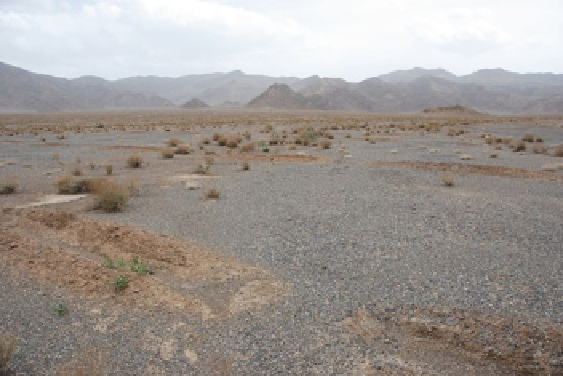Geoscience Reference
In-Depth Information
Fig. 17.10
Harsh desert environments like this pose a real challenge to those who wish to
re-vegetate
ecological conditions in the region, where the continuity of biological reproduction
is assured by the restoration of nature's life cycle (Fig.
17.10
).
Reclamation of natural resources and plant cover in desert lands is a difficult
and challenging task, but it will bear fruitful results if it is carried out with rational
and proper planning. Thus stabilization of dunes helps to protect residential areas,
roads and valuable economic resources and so deserts, once bare and barren, become
wood and fodder producing centers or become a source of fuel wood if planted to
trees. Fuel wood is major problem (see Box
17.1
).
Today, in Iran, as a result of implementation of dune stabilization projects, not
only plant cover of vast expanses of deserts has been rehabilitated, but also parts of
these lands have been converted to agricultural or industrial areas with vast farming
lands and several industrial and economic centers.
More than a quarter of a century of widespread activities in the field of
drifting - sand stabilization, and desert elimination, and the experience gained in
their practical application, have placed Iran in the rank of the world's leading and
authoritative countries, in regard of the practical application of sand stabilization
and desert elimination programs.
Since the menace of the encroaching deserts and drifting sands constitutes the
common problem of several countries in the region, as well as of certain areas of
the Asian and the African continents, Iran's experience and the progress achieved
by Iran in this field, may well constitute path-breakers for the interested countries
(Fig.
17.11
).

Search WWH ::

Custom Search